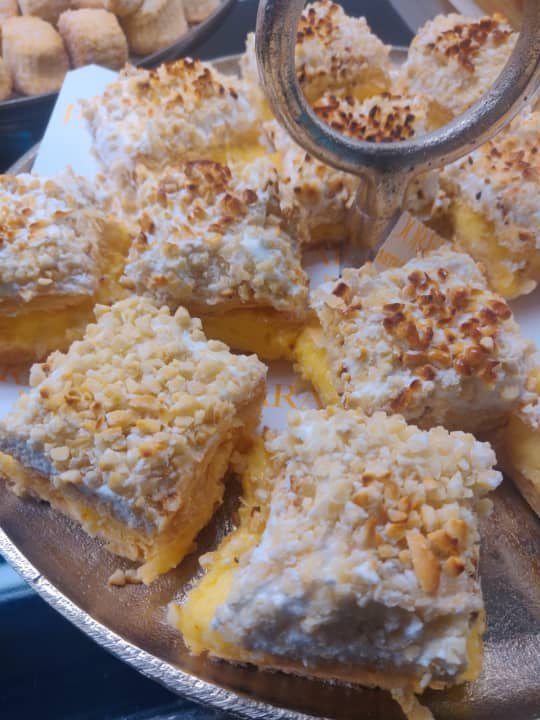



If you thought travelling to UNESCO World Heritage Sites entails only architectural wonders and a lot of history timelines, your taste buds are in for a scrumptious surprise. Food can narrate history through the palate. Three UNESCO cities in Madrid region offer a unique taste of history and tradition:
Cervantes cuisine of Alcala de Henares
This student town is important for all of Spain as the birthplace of author Miguel de Cervantes, whose book Don Quixote put Spanish literature on the world map.
Cervantes cuisine, originating in 16th century Spain, refers to foods mentioned in his fiction novel that revolves around the adventures of whimsical knight named Don Quixote and his squire Sancho Panza.
The first dish is Migas, a shepherd’s humble meal of leftover bread toasted with chorizo, ham and eggs; usually cooked in an earthen pot on an open fire.
 Migas
Migas
Most hotel serve Migas for breakfast, and a must-try is the sweet version made with chocolate and cinnamon.
Take time to gawk at the University façade and visit Cervantes Museum that recreates the customs and traditions of everyday life of 16th and 17th century. Crane your neck to spot white storks that build nests atop historic buildings and churches.
At the main square, where a sculpture of Cervantes stands on a pedestal, the oldest bakery Salinas Pasteleria sells a classic traditional pastry that has its origin in this student town. Costrada is puff pastry with alternate fillings of meringue and pastry cream, topped with almonds slivers.
 Costrada
Costrada
Almonds are special to Alcala, especially garrapinadas or caramelized almonds made by nuns and sold through a turn table at The Poor Claires of the Closure Convent of San Diego.
 Caramelised almonds (Photo credit: Ayuntamiento de Alcalá de Henares)
Caramelised almonds (Photo credit: Ayuntamiento de Alcalá de Henares)
If you’re still nursing a sweet tooth, Rosquillas or donuts filled with cream and glazed with egg and sugar are a must-try.
 Rosquillas
Rosquillas
Salamanca
Known as the golden city with the most stunning Plaza Mayor, Salamanca is a heritage freak’s dream come true. From the university showcasing Renaissance art, new cathedral made in gothic, baroque and renaissance styles and a 15th century Sky of Salamanca mural.
All hunger pangs lead to Jamon (ham). Salamanca pastureland is home to Iberico pig used to make chorizos, port loins, black puddings. Known for its sausage production, Salamanca is famous for farinato (chorizo) sausage. A local tip, it’s best savoured with fried eggs with a few drops of lemon juice.
A must-have is the Salamanca Hornazo-a meat pie packed with ham, loin, chorizo, hardboiled egg within a sweet pastry made of egg, lard, sugar and salt.
 Hornazo (Photo credit: Turismo de Salamanca)
Hornazo (Photo credit: Turismo de Salamanca)
Segovia
One of the most stunning and lesser-known cities of Spain, Segovia will scoop you into a yesteryear timeline that lands you at the last of Europe’s Gothic Cathedrals, a 2000-year-old Roman aquaduct that is believed to have been built by the devil, and an alcazar or castle that inspired Walt Disney to build the Disney castle. Segovians are happy-go-lucky folks who love their food.
Here, Cochinillo or suckling pig is a delicacy, which is a roast dish of the Castilian cuisine inherited after the invasion of the Roman Empire. Earlier, a delicacy for the privileged, it was in the 17th century that the roast suckling pig became popular in the taverns in the region where it was offered to travellers.
 Cochinillo, or roast suckling pig, at the 2014 Fiesta del Cochinillo
Cochinillo, or roast suckling pig, at the 2014 Fiesta del Cochinillo
Over the years, the Segovian version of suckling pig has stood out among tourists. So tender, the meat is cut with the rounded edge of a plate.
Once you’re full on some house wine and a hearty meal, end the meal with ponche, a local cake made with custard and marzipan.
 Ponche
Ponche
Discover the latest Business News, Sensex, and Nifty updates. Obtain Personal Finance insights, tax queries, and expert opinions on Moneycontrol or download the Moneycontrol App to stay updated!
Find the best of Al News in one place, specially curated for you every weekend.
Stay on top of the latest tech trends and biggest startup news.